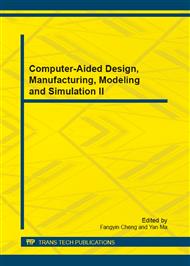p.441
p.446
p.451
p.456
p.461
p.466
p.472
p.476
p.482
The Effects of Different Support Forms on the Aerodynamic Characteristics of the High-Speed Train Model
Abstract:
By the method of computational fluid dynamics (CFD), this paper calculates the aerodynamic parameters of one complex high-speed train model which adopts different support forms when the reference velocity is 70m/s under different operating conditions. It also analyses the support interference mechanism from the point of flow field structure. The results show that the distributed cylinder support form causes least interference on the model, while the single big cylinder support forms change the flow field structures much which leads to much change of the aerodynamic parameters of the model. The distributed cylinder support form can be applied as a good support form for the high-speed train wind tunnel tests.
Info:
Periodical:
Pages:
461-465
Citation:
Online since:
December 2012
Authors:
Price:
Сopyright:
© 2013 Trans Tech Publications Ltd. All Rights Reserved
Share:
Citation:


